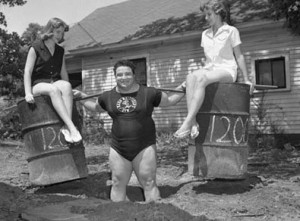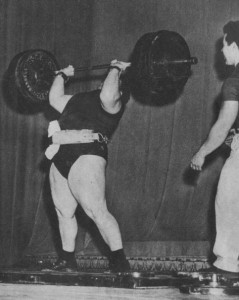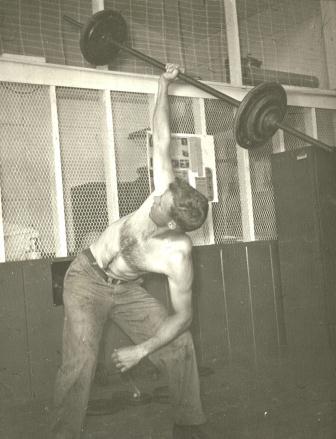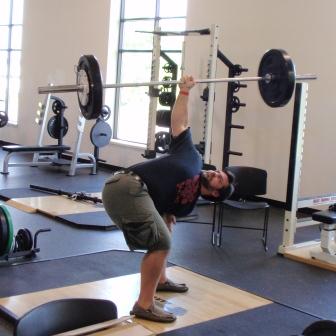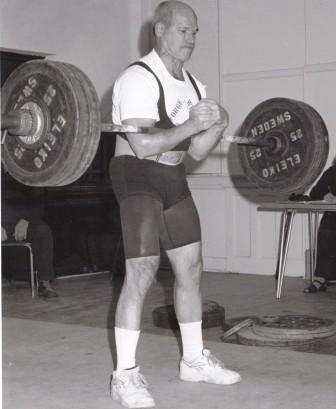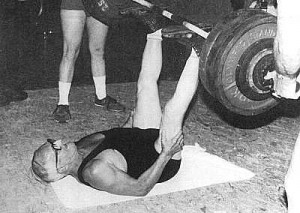Rules for the Dumbbell Shoulder
by Thom Van Vleck
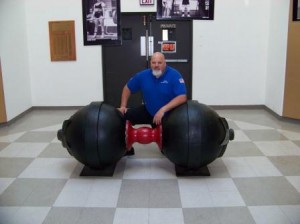
Two big Dumbbells.....could either one be shouldered in the "Dumbbell Shoulder" event at the Old Time Strongman Nationals?
When Al and I discussed me hosting the Old Time Strongman Nationals one of the things that I wanted to do was come up with some new lifts. The “OTS” concept is to have lifts that aren’t current USAWA lifts, that have more relaxed rules, be able to raise or lower the weight, be done for a max attempt, and be something the old timers did. What followed was me sending Al numerous lifts and him pointing out how they were already USAWA lifts or did not fit the criteria in some way! In my research I came across the weightlifting for the 1904 Olympics. It was very different than from today. There were actually two separate events, a barbell competition and a Dumbbell competition. There were several Dumbbell lifts and one of them involved cleaning a heavy dumbbell. I stumped Al on this one. There are no current USAWA lifts that involved cleaning a dumbbell and Al thought there ought to be so he shot down my idea based on the fact that we need to add that lift to the regular USAWA lifts….as a result it COULDN’T be an OTS event! So, I came back with this event, as inspired by that 1904 Olympic event and thus the name!
USAWA Rule for the 1904 Dumbbell Shoulder
A Dumbbell will be taken from the floor to the shoulder using any method the lifter wants to employ. The dumbbell may be lifted with two hands, continental style, may be rested on the belt during the lift, by any part of the dumbbell. Hands may grip the plates, bar, collars or any part of the dumbbell. Any size plate may be loaded onto the dumbbell.The lift is completed when the lifter is standing upright, with the dumbbell resting on the shoulder, and the lifter demonstrating control. Both hands may remain on the dumbbell to complete the lift, or with one hand or both hands off the dumbbell. Time limit of 1 minute is given to complete the lift. An official will give a command to end the lift.
So, we will give this one a try. It may be a “one and done” event in that we will have to see how this one plays in competition. If it does, then great! At the least, it is a unique event and it will be interesting to see how much we can do!
